Modern hockey begins in 1886 with the second attempt to form a national Hockey Association (HA) by clubs in the metropolitan suburbs of London whose memberships were made up of upper middle class ex public schoolboys and Oxbridge graduates. Hockey’s popularity amongst this group would spread to the suburbs of Liverpool and Manchester where sufficient clubs were established by the early 1890s to have two district associations playing in pseudo leagues. In Yorkshire progress was slow despite having the first hockey club in the North, Farnley United (1879) who had become Almondbury HC by the time they joined the HA in 1888. The Athletic News in 1894 celebrating the formation of Leeds HC, a club they described as being made up of mainly varsity and public school men commented on the situation
“it is passing strange that more recognition has not been vouchsafed to hockey in a shire so devoted to sport as Yorkshire, the more so as some few years ago it boasted of at least one club of above average merit.”[i]
In East Yorkshire organised hockey begins with Hull’s Newland HC in 1894 playing the first part of the season amongst themselves reporting the first practice match as a win for the vice captain’s team 5-3 and the second match as a draw.[ii] A third practice match on the Newland Park estate ground resulted in the captain’s (Frederick Snowdon) side winning 5-0 over the vice-captain’s (H. Singleton) side.[iii] Other practice matches were reported in the press as against Newland Young Men’s Guild and Newland Cricket Club until real opposition was found nearby in March 1895 as Hedon HC was established by the Revd. John H Richardson a graduate of Trinity College, Cambridge. Newland HC would remain unbeaten until February 1896 when they suffered their first defeat 1-0 away to Bradford where the ground was like a quagmire as there was not a patch of green to be seen. At their AGM in May 1897, it was agreed to change their name to Hull HC and at this time there were just six other Yorkshire teams affiliated to the HA (Bradford 1894, Halifax 1891, Hedon 1895, Holbeck Church 1894, Leeds 1893 and York 1895).
Hedon HC was, like many clubs across Yorkshire and other shire counties, founded by members of the clergy. The Revd. John H Richardson founded and captained the team and his fellow Cambridge graduate the Revd. Edwin Evers and his three sons were regular players. Muscular Christianity was evident as hockey could be described as the clergyman’s game. The newly formed clubs of the late 1880s and 1890s were mainly upper middle class clubs and the clergy had traditionally seen itself as part of the gentry and in this newly industrialised society part of the professional classes.
The early Hedon HC players were drawn from the community and though the majority of players can be seen as part of the upper middle classes some like the station master’s sons were railway clerks who were considered to be at the bottom of the lower middle class due to their poor pay being less than many of the labour aristocracy. Like so many clubs, the clergy and their sons could be found playing hockey whilst many others were officials in their local clubs. The president of Newland HC was the Revd. Dr Joseph Mallet Lambert, Vicar of Newland.
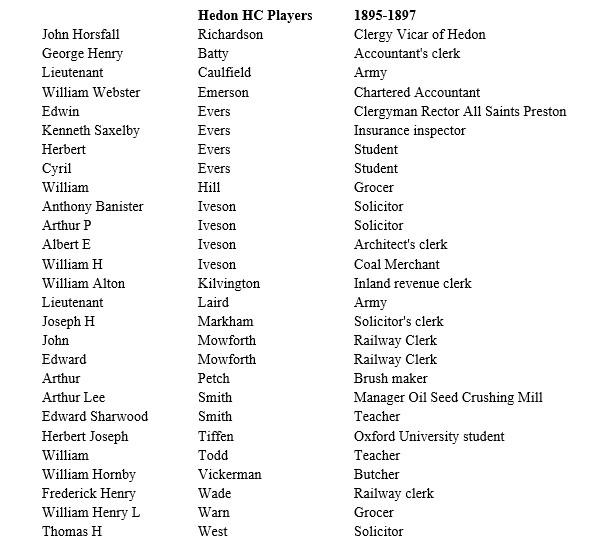
Hockey’s popularity in Hull and the surrounding area grew steadily and by 1902 the sports editor of the Hull Daily Mail was calling for a league or cup competition to be formed.
Now that hockey has become firmly established in Hull and East Riding, the question has been mooted as to the advisability of forming a league or some form of competition. Seeing that there are some twenty clubs in the neighbourhood of Hull, many leading players are inclined to the belief that a competition could be run on a sound basis.[iv]
The next issue saw a letter from “A Hockeyite” pointing out the HA’s rule 14 banning the playing for cups and competitions. Of the ‘some twenty clubs’ only three (Hull, Hull Old Boys, East Riding) were members of the Yorkshire HA. These three clubs would make up the East Riding District side that would play the Rest of Yorkshire in the annual county trials. Hockey’s popularity in Hull was such that the Morison Advertising Agency was publishing annually from 1902 The Hull & District Hockey Register which contained the rules of the game and the fixtures lists and officers of all the local clubs. The register sold for 2d and 3d in 1909.
Men’s clubs known to be playing before 1913 were:
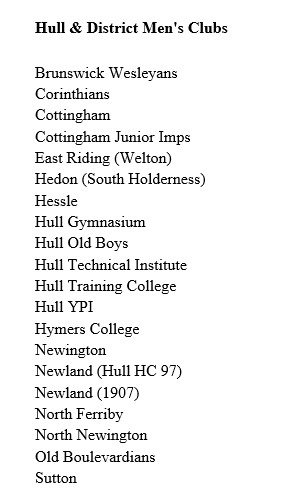 The arrival of John Henry Ottevanger, a company accountant, from Holland into the Hull Old Boys (1899) club would lead Hull Old Boys and friends travelling under the name of Hull Wanderers to Holland at Easter 1902 and were probably the first English side to do so. Three games ended in three defeats Rotterdam Victoria 6-2, All Holland Team 7-0, United Universities 2-1. The following year’s Easter tour would take Hull Old Boys to the not so glamorous Birmingham and Wolverhampton.
The arrival of John Henry Ottevanger, a company accountant, from Holland into the Hull Old Boys (1899) club would lead Hull Old Boys and friends travelling under the name of Hull Wanderers to Holland at Easter 1902 and were probably the first English side to do so. Three games ended in three defeats Rotterdam Victoria 6-2, All Holland Team 7-0, United Universities 2-1. The following year’s Easter tour would take Hull Old Boys to the not so glamorous Birmingham and Wolverhampton.
A ferry ride across the Humber were three Grimsby hockey clubs (Grimsby Town, Grimsby Winter Sports, Grimsby St. Johns) and Barton HC who regularly played in Hull. Goole had two clubs Old Goole (Goole Town) and Goole United who because Goole Football Club could not raise a team in 1903 rented their ground for their Thursday and Saturday teams.
Across East Riding Thursday was deemed to be a half day for those who could afford to take the time away from work. Mixed hockey matches were popular in midweek with some teams only playing midweek games. Some men’s clubs such as Hull Old Boys had separate Thursday and Saturday sections acting virtually as two clubs with separate Hon. Secretaries. In 1902, the Thursday section had fixtures with Beverley HC, Bishop Burton HC, Goole Town HC, Goole Utd HC, Grimsby HC, Hull HC, Hymers College, and Selby HC. In 1904, an AGM proposal to unite the two sections led to resignation of the whole of the Thursday section to form a new Thursday club Hull Corinthians HC. The fixture list highlights how common midweek sport had become in the Edwardian era for some members of the petty bourgeoisie.
Hockey’s popularity extended across the East Riding as towns and villages started their own hockey clubs. Driffield started a club in March 1899 but it soon disbanded only to be followed successfully by the establishment of Driffield Town HC in 1902 who drew members from the Town Cricket Club. Bishop Burton, a village of 415 in the 1901 census, had its own hockey team in 1901 and in 1903 the village hockey team would thrash Hull Old Boys 13-0 with four members of the Duck family, who were joiners on the local Hall Watt estate, scoring all of the goals. From the picture below we can imagine that there was some competition for places in the team.

1902
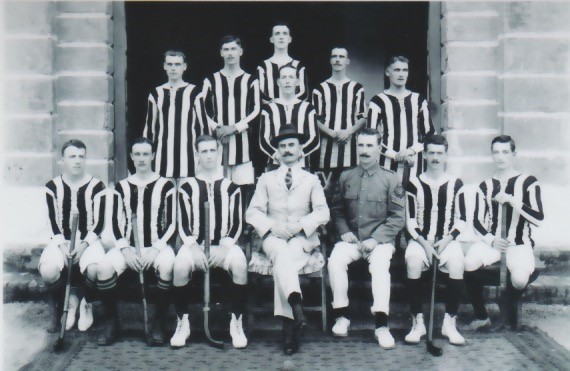
East Yorkshire Regiment Burma 1905-6
In March 1901 the newly formed Beverley HC played out a 3-3 draw with Walkington HC “a village club that had existed for several seasons”[v] followed by an exciting 9-6 win over Middleton village team and a 4-3 win over the Victoria Barracks team of the East Yorkshire Regiment who like most regiments had keen hockey players who took the game across the Empire. At this time, Harvey Jesse Wood was a 15 year old Beverley station railway clerk. The son of a sporting Beverley butcher he had presumably started his hockey career with the club as by 1907-8 season he could be found playing for West Bromwich HC who would be the only unbeaten Midlands team that season thanks to his goalkeeping. Appearances for Staffordshire and the Midlands led to an England debut against Wales in March 1908. He played in all of England’s games in 1908 including all three of the games in the Olympics winning the gold medal. The Olympic winning team was made up upper middle class ex public schoolboys apart from the six foot four inches goalkeeper Harvey J Wood. Harvey played seven times conceding six goals but never played again for England after 1908.[vi] He would return to Beverley continuing his career as a railway clerk.
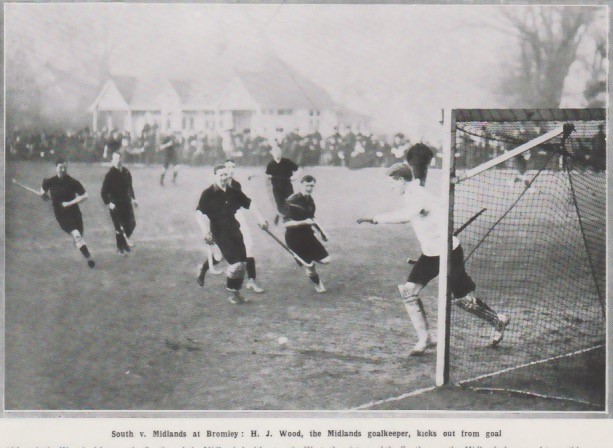
Harvey J. Wood in action for the Midlands versus the South at Bromley 1908
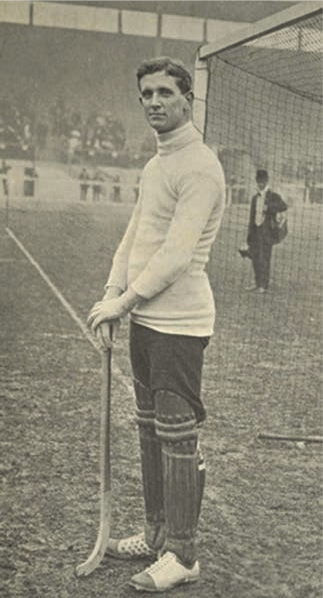
Harvey J Wood at the Olympic games October 1908[vii]
Bridlington HC 1907-8 fixture list highlights the growing local popularity of the game travelling to only play either in Hull or Scarborough. The Hull clubs were: Hull; Hull Gymnastic; Hull Newland; Hull Old Boys; Hull YPI and East Riding. The Scarborough clubs included: Scarborough; Scarborough Banks; Scarborough Casuals; Scarborough Queen Street; Scarborough Westborough and Scarborough YMCA. Bridlington’s only other fixture was against their new local rivals Bridlington United on Boxing Day which they won 3-0. Hockey’s popularity in both Scarborough and Bridlington was partly due to the fact that the majority of games were played on the beach at little or no cost. In October 1907 Bridlington’s game away against Scarborough Queen Street was played before a crowd of 300 spectators on the South Sands but the pitch was slightly narrowed due to the tide which prevented open play and led to victory for Queen Street 2-1.[viii] At Bridlington in 1910, Bridlington Alexandra Ladies drew with Hull YPI 1-1 but “a rather exciting finish was witnessed owing to the tide having encroached upon the field of play and completely immersing the striking circle of the visitors. Both sets of players played ankle deep in water. They commenced play on the North Sands and concluded in the North Sea.”[ix]
Scarborough would organise its first Easter Hockey Festival in 1907 with seven visiting teams (Nottingham, Sheffield, Ben Rhydding, Hull & East Riding, Hull Gymnasium, Royal Garrison Artillery, Leeds Corinthians). By 1912 there were fourteen teams travelling to the seaside resort from as far as London such as the Vagabonds (Clapham Ramblers HC) side who, rather scandalously, would bring both a men’s and a ladies’ team touring together.
Withernsea HC began in 1901 with 30 members forming a men’s and ladies’ teams. The Rev. A. E. Hall captained the men’s side and in 1903 was accused of being “unnecessarily rough” by the Hull Newington captain. The men’s team had a poor reputation losing most of their games each season though they did beat Hull Old Boys 2nd XI 6-2 a week after the Newington game. At one point there was even a call in the local newspaper for them to disband and in a Hull Daily Mail theatre review it was stated “the cast in Liberty Hall given at Withernsea on Tuesday were all members of the Withernsea Hockey Club with one exception. They appear to be more successful at amateur theatricals than at hockey.”[x] Withernsea HC represented the growing trend for new clubs to have teams for both men and women and to also play mixed hockey. Hockey offered up many mixed social opportunities post-match teas, with songs and dancing in pavilions, tea and coffee houses, annual balls, regular whist drives, and fancy dress parties (Scarborough HC). Withernsea HC were typical of the time playing hockey yet having a musical union and a theatrical group. Hockey for many was their major weekly social event and became for some a marriage mart circumventing Edwardian chaperonage.
Women’s hockey, like elsewhere in the country, expanded rapidly during the Edwardian era. The early East Yorkshire ladies clubs, like the majority of men’s clubs, never affiliated to All England Women’s Association as their only members were only Hull & East Riding LHC and Scarborough LHC before 1914 yet there were numerous clubs across East Riding. Market Weighton LHC in 1907 had a local fixture card of matches with Acomb, Bainton LHC, Bridlington Ramblers, Driffield Pupil Teachers Centre, Holland House Old Girls, Hull YPI, Pocklington HS, Selby LHC, York Pupil Teachers Centre. In 1914 Scarborough Ladies would celebrate fifty games undefeated over three and half seasons.
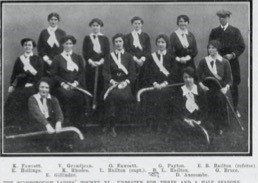
Scarborough Ladies 1914
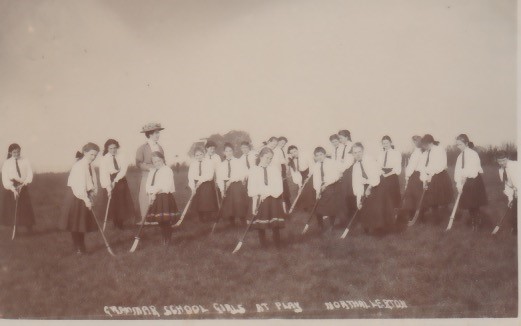
North Allerton Grammar School Girls 1909 with Miss Weagge in charge
The enthusiasm for hockey that prevailed in the independent girls boarding and day schools was disseminated by many a grammar school, some board schools and the newly created secondary schools who mimicked them. Hull’s Craven Street Municipal Secondary School started a hockey club in 1907 with two teams playing in East Park. The first team played 13 games won 9, drew 2 and lost 2 scoring 45 goals and 6 conceded. Thirty eight of the goals were scored by Annie Mackay and Hilda Suddaby. The 2nd XI played five games winning just one. An old girls hockey club would soon emerge alongside the New High School OG and the Old Boulevardians. The post war Hull and District Ladies Hockey League in its first season 1921-22 would see Craven St OG win the first division title.
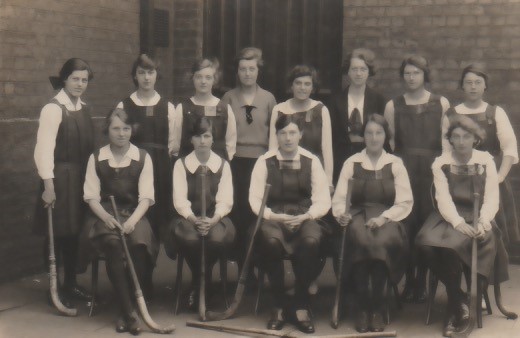
Craven Street Municipal Secondary School 1st XI
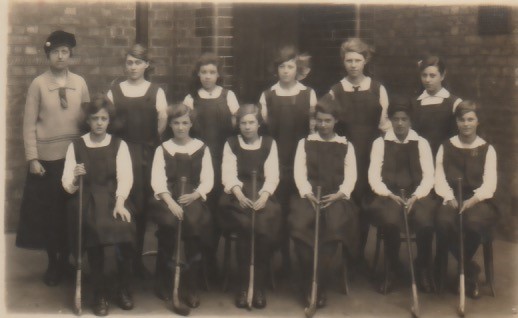
Craven Street Municipal Secondary School 2nd XI
Hull Ladies Hockey League 1921-22[xi]

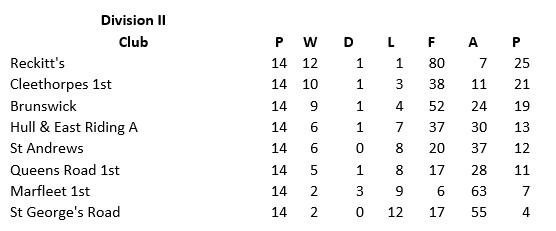
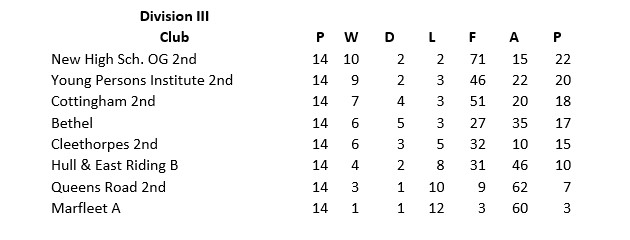
Other than the upper middle class clubs most clubs saw no value in affiliation to their associations as their players were unlikely to play for the county teams and neither would they play against the top clubs. A situation summed up by “Bully off” in the hockey editorial of the Yorkshire Post below:
On the subject of affiliation one player writes to me to the effect that he is not at all surprised that so many clubs do not become affiliated to the County Association. Writing under the initials C.G.G. he says that while he is a member of an affiliated club, he fails to see what advantages accrue from affiliation and adds “Although there are advantages to the players being picked for county there are absolutely no advantages to the club. One would of thought that young clubs would have been encouraged by receiving a few dates from older established teams, but that this not so. A certain number of clubs play each other year after year with sickening monotony, while young struggling clubs are ignored.[xii]
For reasons of size, cost, temporary status, social status or unwillingness to comply, there have always been large numbers of unaffiliated, and therefore largely under-recorded, clubs in a variety of sports.[xiii] In hockey, it would seem in East Yorkshire unaffiliated Edwardian clubs outnumbered the affiliated hockey clubs on a significant scale in both the women’s and men’s game. Consequently, the popularity of the game in the Edwardian era has been somewhat understated.
The First World War would curtail men’s hockey’s popularity as only five men’s clubs (Hull, Hull YPI, Cottingham, Hessle and Kingston) existed in the interwar period and World War II would reduce it further to just one Hull and YPI HC as four clubs merged though it became two later, Welton HC and Hull YPI, who would later merge to form today’s Hull HC. Meanwhile, the women’s game would go from strength to strength as the Hull and District Ladies Hockey League grew to three divisions with 33 teams and then to four in 1938-39 with 38 teams reflecting that hockey led the sporting emancipation of women in the interwar period. Hockey would return to the beach at Scarborough in 1931 when unfit rain soaked grass pitches led the Northern Counties Women’s Championship to transfer to the sands.
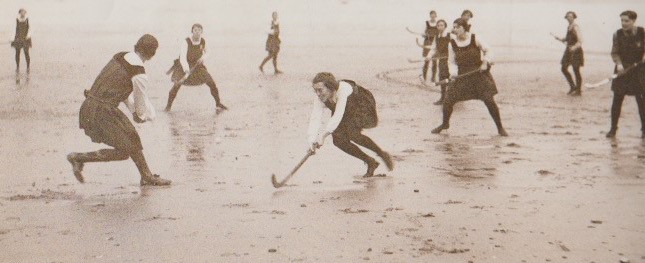
Cheshire v Durham 1931
Hockey’s popularity in Hull would experience a resurgence in the 1970s and 1980s as with Leicester it was one of only two cities in England to have a Sunday mixed hockey league of 20 teams though hockey would never regain the level of its Edwardian popularity.
Article © of James Ormandy
References
[i] Athletic News 26th March 1894
[ii] Hull Daily Mail 1st October & 22nd October 1894
[iii] Hull Daily Mail November 1894
[iv] Hull Daily Mail 8th January 1902
[v] East Riding Telegraph 9th March 1901
[vi] https://www.eastridingmuseums.co.uk/EasySiteWeb/EasySite/StyleData/culture/downloads/museums/past-exhibits/beverley-guildhall/sporting-beverley.pdf
[vii] https://www.eastridingmuseums.co.uk/EasySiteWeb/EasySite/StyleData/culture/downloads/museums/past-exhibits/beverley-guildhall/sporting-beverley.pdf
[viii] Bridlington Free Press 1st November 1907
[ix] Bridlington Free Press 11th November 1910
[x] Hull Daily Mail 7th February 1908
[xi] Hull Daily Mail 9th May 1922
[xii] Yorkshire Evening News November 16th, 1905
[xiii] Joyce Kay (2013) ‘Maintaining the Traditions of British Sport’? The Private Sports Club in the Twentieth Century, The International Journal of the History of Sport, 30:14, 1655-1669

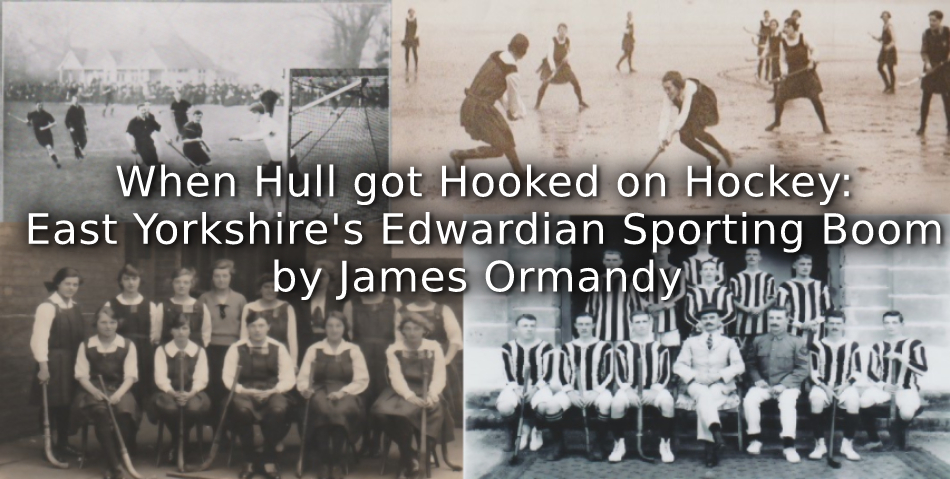
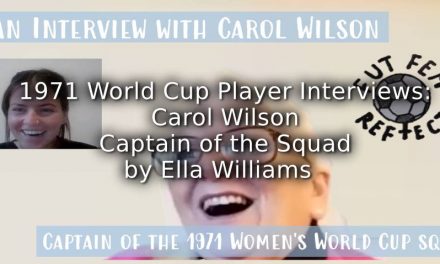
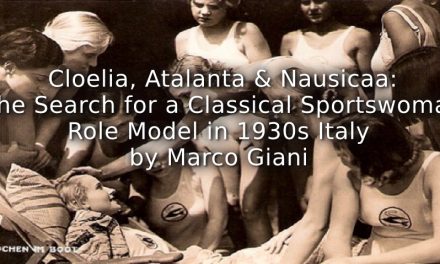
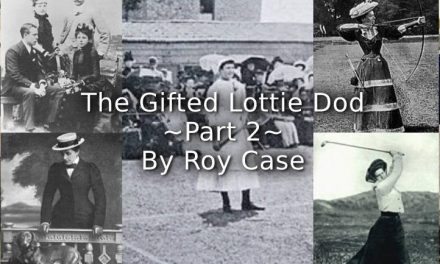
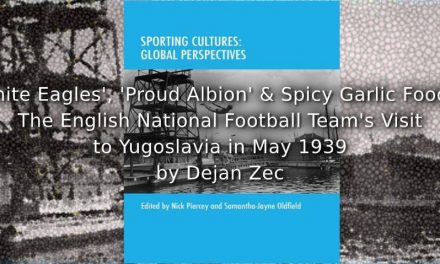
Hockey has largely been a neglected subject amongst sports historians so well done James for providing this coverage.
Thanks for your comment Mike. I am hoping to finish a book Only for Ladies &Gentlemen: A History of Hockey 1830-1950 from a Northern Window. The theme aims to show that the men’s game was actually more popular in the north than the south before 1914 and that the women’s game was more popular in the north than the south during the interwar period. Chapter 2 is inspired by your 2008 work on the upper classes, titled Royal, Lords and Ladies play hockey shows how popular the game was in the 1890s/1900s amongst this group who were playing behind closed doors. I have managed to trace royals at play, aristocratic ladies teams touring the country playing their own invitational XIs and the fact which has not been picked up that the first international sides had daughters of the aristocracy in the teams. Hopefully after lockdown I can finish my research on the final two chapters.
Fascinating history. I played in mid to late 50’s across the river , for Normandy Park, and though no Humber bridge then, we played games in Hull and attended both Bridlington and Scarborough- this with a Poachers side. Many happy memories , including games on the sands. Why did we seem often to get snow at Easter !
David Sumpter